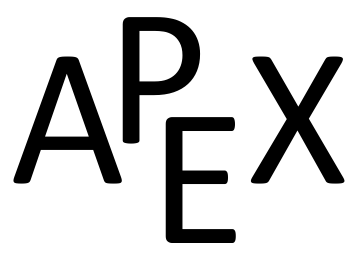To compute \(\crossp uv\text{,}\) we form the matrix as prescribed above, complete with repeated first columns:
\begin{equation*}
\begin{matrix} \ \veci\ \amp \ \vecj\ \amp \ \veck\ \amp \ \veci\ \amp \ \vecj\ \\ 1\amp 3\amp 6\amp 1\amp 3\\-1\amp 2\amp 1\amp -1\amp 2 \end{matrix}
\end{equation*}
We let the reader compute the products of the diagonals; we give the result:
\begin{equation*}
\crossp uv = \big(3\veci-6\vecj+2\veck\,\big) - \big(-3\veck + 12\veci+\vecj\,\big) = \la -9,-7,5\ra\text{.}
\end{equation*}
To compute \(\crossp vu\text{,}\) we switch the second and third rows of the above matrix, then multiply along diagonals and subtract:
\begin{equation*}
\begin{matrix} \ \veci\ \amp \ \vecj\ \amp \ \veck\ \amp \ \veci\ \amp \ \vecj\ \\-1\amp 2\amp 1\amp -1\amp 2\\ 1\amp 3\amp 6\amp 1\amp 3 \end{matrix}
\end{equation*}
Note how with the rows being switched, the products that once appeared on the right now appear on the left, and vice-versa. Thus the result is:
\begin{equation*}
\crossp vu = \big(12\veci+\vecj-3\veck\,\big) - \big(2\veck + 3\veci-6\vecj\,\big) = \la 9,7,-5\ra\text{,}
\end{equation*}
which is the opposite of \(\crossp uv\text{.}\) We leave it to the reader to verify that each of these vectors is orthogonal to \(\vec u\) and \(\vec v\text{.}\)

